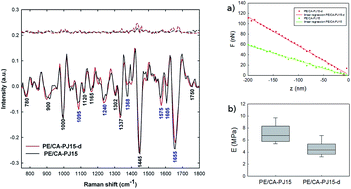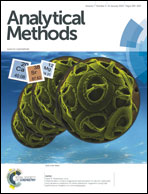Discrimination of different degrees of oral squamous cell carcinoma by means of Raman microspectroscopy and atomic force microscopy
Abstract
Oral squamous cell carcinoma is a widespread cancer disease whose survival rate is strongly dependent on early diagnosis and on the degree of malignancy. The conventional histopathology methods, which are currently the standard ones for diagnosis, are very invasive so that they can be hardly proposed as screening methods for an early and accurate detection of disease. Raman microspectroscopy and atomic force microscopy can be potentially considered as useful tools for cancer diagnosis and detection of the malignancy degree because they provide information about the biochemical cellular content and nanomechanical properties, respectively, which would be modified by the onset and progression of pathology. The present work shows that both techniques can successfully discriminate the two cellular types of cells characterized by different degrees of oral squamous cell carcinoma. The discrimination by Raman microspectroscopy occurs according to a larger content of nucleic acids and a minor content of protein components in cells characterized by a larger degree of disease, whereas the discrimination by atomic force microscopy is achieved because of a decrease of stiffness as the degree of disease increases. Overall, both techniques could provide useful diagnostic information related to the degree of malignancy of the oral squamous cell carcinoma disease.


 Please wait while we load your content...
Please wait while we load your content...